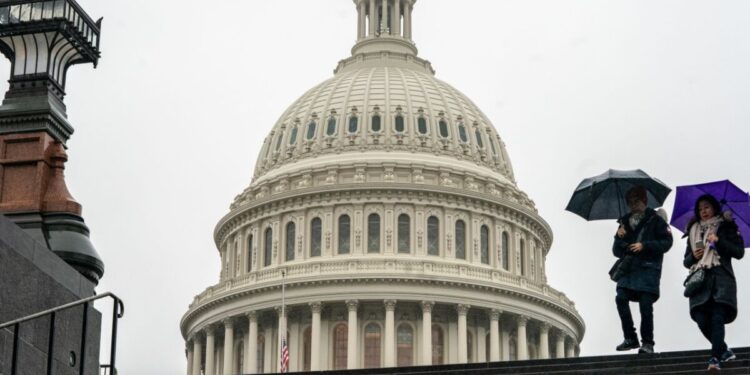As the federal government shutdown extends into its 22nd day, more federal workers are applying for unemployment benefits in Washington state.
The Washington Employment Security Department reported that as of October 1, ongoing weekly unemployment claims totaled 2,784,350. That’s for all industries.
The state has experienced mass layoffs this year, and October marks the beginning of the busiest period for unemployment claims, including those from seasonal workers.
Terri Gentry, who was laid off this month, described the experience as “hard and challenging in a lot of aspects.” Mary Wong, who faced a layoff over the summer, expressed empathy for federal workers, saying, “Especially because they are so abrupt and it’s more questions than answers.” Gentry added, “It’s not fair; it doesn’t seem fair at all. My heart goes out to them.”
There are 80,000 federal workers in the state, with the five largest employers being the U.S. Department of Defense, U.S. Postal Service, U.S. Department of Veterans Affairs, U.S. Department of Homeland Security, and U.S. Department of Transportation.
Most affected workers received their last paycheck on October 10 for work completed in September, before the shutdown began.
The state reports an increase in unemployment claims from federal workers, contributing to a growing workload for the Employment Security Department. Some federal workers, who wished to remain anonymous, reported long hold times over the phone and delays with their claims.
Despite the surge in claims, an ESD spokesperson stated there is “zero backlog” of federal worker cases connected to the shutdown, though verifying wage information for federal workers without W-2s or pay stubs poses a challenge during the shutdown and can slow down the process.
Terri Gentry, who is not a federal worker but was laid off on October 7 from a payroll position, found the process smooth, saying, “I would say it was a smooth experience, an immediate response. I did everything online.”
As of Tuesday, the state has received 1,625 applications from federal workers, with 411 claims paid, 377 pending, 514 applied but didn’t file a weekly claim, and 323 with other issues still being verified.
“Our number 1 goal is to get people paid as quickly as possible,” ESD Commissioner Cami Feek said. “We understand the stress involved in being furloughed or laid off.”
To assist federal workers impacted by the shutdown, the ESD will co-host a free webinar on Thursday with Pacific Mountain Workforce Development.
Topics will include how to apply for benefits, file weekly claims, manage health care benefits, expand job skills through training and educational programs, and access career guidance and job search help.
Additionally, the Washington State Department of Financial Institutions has developed a list of financial resources for those affected.
The 1,625 unemployment applications from federal workers represent about 2% of Washington’s 80,000 federal workforce, suggesting many furloughed employees are either waiting to see if the shutdown ends quickly or have sufficient savings to delay filing for benefits.
The verification challenge for federal workers without access to W-2s or pay stubs during the shutdown creates bureaucratic obstacles that private sector laid-off workers like Terri Gentry don’t face, highlighting how government shutdowns complicate standard unemployment procedures.
The October 10 last paycheck date means affected federal workers entered November without income, with those filing immediately potentially receiving first unemployment benefits by late October though processing delays could extend financial hardship into mid-November.
Washington’s concentration of 80,000 federal workers creates disproportionate local economic impact compared to states with smaller federal presence, with the shutdown rippling through housing markets, retail spending, and service industries dependent on federal employee customers.
The U.S. Department of Defense as Washington’s largest federal employer reflects Joint Base Lewis-McChord’s massive presence south of Seattle, where thousands of civilian DOD employees face furlough while active-duty military continue receiving pay.
The 514 applications where workers didn’t file weekly claims suggests confusion about unemployment system requirements, as recipients must file continuing claims each week to maintain benefits even after initial approval.
ESD’s claim of “zero backlog” for federal worker cases contradicts anonymous worker reports of long hold times and delays, indicating potential disconnect between official metrics and applicant experiences navigating the system.
The Pacific Mountain Workforce Development partnership for the webinar reflects regional approach to addressing concentrated federal worker populations in areas like Pierce County, where military installations and federal agencies employ thousands.
The Washington State Department of Financial Institutions’ resource list likely includes mortgage forbearance options, utility payment plans, and low-interest loan programs that federal workers can access while awaiting unemployment benefits or shutdown resolution.
The timing coinciding with October’s seasonal unemployment surge from industries like construction and agriculture compounds processing challenges as ESD handles both regular seasonal claims and unexpected federal worker applications simultaneously.







